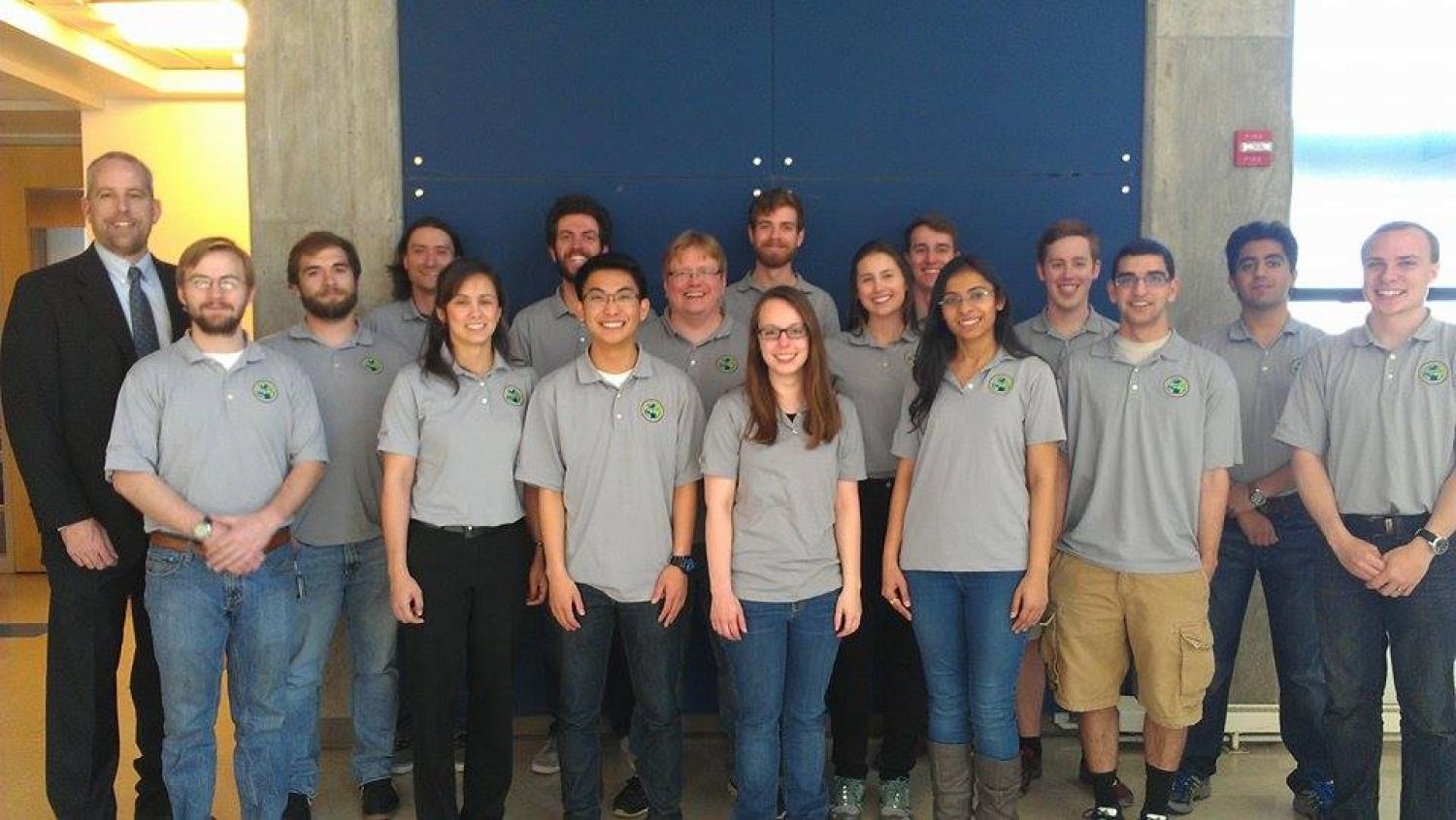Scott Palo: Growing the Small Satellite Community
As the Associate Dean of Research, Dr. Scott Palo is familiar with the full diversity and breadth of CU’s aerospace research. Dr. Palo’s personal niche in “small satellites,” and his ability to transcend the traditionally divided worlds of science and engineering, has allowed him to form the foundation of CU’s CubeSat community.
Dr. Palo’s original involvement in aerospace systems emerged from his interest in electrical engineering:
“When I came to graduate school [at CU], I was interested in electrical engineering, specifically communication systems and signal processing. I followed the research funding and ended up working on radar systems. At that point, I started getting interested in the science of why I was collecting data, not just the engineering challenge of creating data-collecting systems.”
After receiving his Ph.D. in Electrical Engineering from CU in 1994, Dr. Palo capitalized on his burgeoning interest in science, namely space physics, and became a post-doctoral researcher at the National Center for Atmospheric Research (NCAR). Two years later, Palo returned to CU as a researcher, where he investigated the use of Doplar-shifted radio waves to measure wind speeds.
In 2001, Dr. Palo formally joined the CU AES faculty with a slightly different objective: to help grow and develop CU’s small satellite community. He explains:
“There was a faculty search looking for someone involved in small satellites. While I didn’t have a background in small sats per say, I had a background in making hardware work.”

The QB50 Graduate Project team, Fall 2014
CU’s interest in CubeSats had emerged from a growing national recognition of the educational and scientific value of miniaturizing satellites. Desiring to keep astride this trend, Dr. Palo collaborated with Dr. Xinlin Li to develop a CubeSat graduate projects course:
“In 2006, Dr. Xinlin Li and I created a new class about Space Hardware. The idea was that he was more of the science guy, and I was more of the engineering guy (though we could probably cross both domains). Together with students [from this course], we executed three CubeSat missions from proposal to launch: CSWE, MinXSS and QB50.”
CubeSats, with their relatively short design cycle and modest resource requirements, offer students an invaluable opportunity to gain first-hand experience developing flight hardware:
“Because CubeSats can move from concept to delivery in 3 to 4 years, they give students a holistic experience with spacecraft design. For example, I had a Ph.D. student go from concept to execution with CSWE, allowing him to use data from the CubeSat in his thesis.”
In parallel with their educational value, CubeSats, by virtue of their size and adaptability, open new opportunities for scientific advancement:
MinXSS CubeSat
“Secondary launch opportunities are changing the whole calculus of space. The fact that you can get a CubeSat up to orbit rapidly and with low cost (through NASA programs such as ELANA) is incredible. Small satellites will play a significant role in the future, whether as probes ejected from larger satellites, or as constellations collecting in-situ measurements.”
Though constructing CubeSats with students is a “richer” experience than doing so in a purely industry setting, Palo cautions that scientific value must remain the priority:
“We can’t subvert science in the name of education. If we keep saying that this only has educational value, I don’t see [CubeSats] continuing. They have to have an intrinsic, scientific value. Whenever I do a CubeSat, it has to have a purpose.”
Mission badge for the five US participants (CU, University of Michigan, Universidad del Turabo, Stanford University, MIT DRAPER Lab) in the QB50 mission.
Dr. Palo’s latest CubeSat mission, QB50, is a part of an international effort to launch a constellation of 50 CubeSats into orbit to study Earth’s thermosphere. Funded by the National Science Foundation, CU’s QB50 contribution, known as Challenger, will carry a mass spectrometer to measure the constituents of Earth’s thermosphere, and their relative abundance.
The data from the 50 CubeSats of the QB50 mission will be compiled in a common repository that will be used for coordinated, international scientific analysis. Challenger is due for delivery this October.
Though Dr. Palo’s small satellite research places him in frequent collaboration with CCAR, he has also worked with RECUV on several projects, including MIZOPEX (Marginal Ice Zone Process Experiment). MIZOPEX involved the use of UAVs to deploy micro-buoys in the marginal ice zone of the arctic, a region normally only accessible by icebreaker, to make in-situ ocean temperature measurements.
Dr. Palo explains the reasoning for his research variety:
“It all gets back to my research philosophy. I am always looking into moving into new and interesting research areas. Right now, the space industry is changing in exciting ways... it’s fun to be a part of the buzz.”
-Written By: Ari Sandberg, Intern

